I love trains. If I could travel everywhere by train, I would. I’m not an example of sustainable traveling, though. Just three years ago I had a job that “helped” me to collect more than 50 flights in one year. Crazy when you think about it. So this year I wanted to experiment. What if I didn’t fly this summer? What if I travelled to my hikes by public transport only? Even if it’s in the Arctic Circle?
One of the hikes on my radar was the Kugsleden (King’s Trail). It is a 420km hiking trail in northern Sweden, with a majority of the trail located all the way in the Arctic Circle. I’ve read that the logistics to get there are not great even if one chooses to fly. I decided to take trains instead. I wanted to see whether more sustainable traveling is realistic and enjoyable.
It took me 3 days to get from Rotterdam to Kvikkjokk, a small village in the north of Sweden, where my hike would start. Here’s my experience.
Day 1: Rotterdam - Amersfoort - Osnabrück - Hamburg - Kopenhagen - Malmö
5 switches and more than 12 hours traveling – what a day! My first train left at 6:35, I arrived at Malmö at 19:07. A friend, who lives in the south of Sweden, picked me up from there to spend a night at her place.
This day was a bit stressful due to all the switches. One missed train might have made my journey much longer. The trains in the Netherlands go quite often (popular connections every 15min), so there I had no worries. In Germany, there were some minor delays, so I would try to avoid connections with tight switch times. Just for the peace of mind.
At the border between Germany and Denmark, everyone was controlled for Covid-19 certificates, which delayed our train by almost 1 hour. As it was a train from Berlin to Kopenhagen, including the airport, with most passengers going to those destinations, the Danish had a great solution. They proceeded straight to Kopenhagen to catch up for the lost time, while passengers for the in-between stations had to switch to another train. From Kopenhagen there are trains to Malmö every 15 mins, there’s no need to book those in advance either.
Overall, all of the trains were good and comfortable. Some of them have a dedicated restaurant wagon, some have a small corner sales point or vending machines for snacks. Toilets in general were also clean. The quality of service is much better in the long-distance, international trains, like ICE. I was also surprised by how busy most of the trains were as I had a traveling neighbor almost all the time.
Day 2: Klippan - Hässleholm - Stockholm
Stockholm was 5 hours away and I planned to take a night train, so the second day I left only in the late afternoon, which was a great pause before another long journey (highly recommended!). There were no surprises or delays. Once in Stockholm, I had one hour before the night train to the north, which was departing at 22:25. I’ve never had a night train, so I was very curious about this experience.
The awesome thing about night trains in Sweden is that there are a lot of choices in terms of travel comfort. The cheapest tickets are for regular seats, which are comfortable for sitting, but definitely not comparable to a bed. I slept in a 6-bed cabin with 5 other ladies. There are male, female, and mixed cabins – to everyone’s taste. For more luxury and privacy, there are also 3-person cabins, which are more expensive. I’ve heard from fellow hikers that if you get one of those cabins as a couple, they usually don’t sell the 3rd place. Not sure if it’s due to Covid-19 or regular practice, though.
I really enjoyed the night train. My cabin neighbors were very friendly, they explained to me how the beds “work” in the cabin and even helped to prepare my bed. In a sleeping cabin, you get a pillow, a duvet, bed sheets, and even a towel. There are also protective belts on the side of the upper beds in case you roll too far out. You can even lock the cabin so that no uninvited guests visit your cabin in the middle of the night.
A separate wagon is dedicated for a restaurant, where you can get warm meals as well as cold snacks. There are quite a lot of booths to sit and enjoy the passing views while eating. Besides toilets, each wagon also has a washing cabin with a sink. To me, the train now ranks as the most comfortable means of transport when traveling at night. I’ve taken some night buses that are supposed to resemble a bed while in Peru, but it was nowhere near the comfort of an actual bed I had on this train. I slept very well with soft swings and the white noise of the train.
Day 3: Stockholm - Boden - Murjek - Jokkmokk - Kvikkjokk
The train network in the north is very synced – if one train is late, the other will wait. My trains were on time though, and so I had no issues switching. From Murjek the only means of public transport are busses, which go only once or twice per day, so you really don’t want to miss one.
From Jokkmokk to Kvikkjokk the bus ride took almost 5 hours, while the distance is a mere 120km. It’s because the bus serves as a post/delivery car, and so we stopped next to almost every house on the way to deliver the mail or packages. Very efficient, I’d say. Before Kvikkjokk we stopped for a 20min break at Årrenjarka Mountain Lodge. There you can finally get a decent, not filtered coffee. Yes, don’t expect miracles from the coffee on the train.
Finally, at 18:00 we arrived at Kvikkjokk. What a surreal feeling. I don’t know if it’s the long journey to get there or the cool air, but it felt very remote.
While it is possible to use only public transport to travel to such remote places as Kvikkjokk, was it worth it? Let’s look at the different criteria and compare my trip to the closest feasible alternative – flying:
- Comfort. Compared to planes, trains are so much more comfortable. More space, more movement freedom and fast-changing views from the window make train travel very comfortable. I also enjoyed the facilities on all of the trains and now I’m a big fan of night trains.
- Price. This is a sad fact, but trains are expensive. For my trip, I’ve spent more than 400 euros on all train tickets (including trains back to Rotterdam). As I was traveling at the end of the season, round flight ticket from Amsterdam to Kiruna was approximately 300 euros. Of course, one needs to keep in mind the cost to and from the airports, but just the fact that the price comes close is such a shame. I noticed the same when traveling in France. Unless you book months in advance, trains can be even more expensive than planes.
- Time. I was not in a hurry and could dedicate 3 days to travel to Arctic Circle. When you think about it, 3 days is a lot. I could have probably made it earlier if I didn’t stop to visit a friend, but I’m not sure in what state I would have arrived at Kvikkjokk. If I took flights, it would have been approximately 1-1,5 days of traveling in total. Places like Kvikkjokk are truly remote, so either way, it’s a long journey to get there, but currently plane would still be quicker.
- Luggage. Compared to a flight, I had more freedom in terms of items allowed to take. As I was going to hike in Sweden, I could easily take my hiking sticks, which are not allowed as cabin baggage on a plane. Flying would have meant that I need to check in my luggage and put my backpack in some other protective bag (we all have seen those videos with lighter luggage literally flying into the plane). As I was trying to minimize the weight, I didn’t want to take any unnecessary items. On a train, my luggage was always with me, in the compartment above and I didn’t need any protective bags
- Sustainability. According to European Environment Agency, trains are by far more sustainable means of travel than planes, especially for short distances. By the way, this report also shows that, for distances under 500km, a plane is a better option in terms of emissions compared to a car occupied by only 1 person. Sustainable practices are complicated 🙂
- Travel stress. There were a lot of switches on my trip, which was the main reason to stress out. On the other hand, some people find flying stressful, so I guess it depends on the personality. I wasn’t worried all the time, but a delay would prompt me to calculate my options.
- Ease of booking. It took some time and effort to arrange my trip, especially with all those switches. Luckily I could book a direct Rotterdam – Kopenhagen ticket and then a Stockholm – Kvikkjokk ticket, ending with a set of tickets for each connection. Google maps can give a good indication of possible connections, but some analysis needs to be done to match them. The matching of the trains and busses in the north of Sweden is especially tricky as there are so few options.
Overall, the whole trip was an adventure in itself. I crossed 4 countries and tried a night train for the first time. My trip to Kvikkjokk allowed me to grasp a bit better just how remote this place is. When I look back, the whole journey from Rotterdam to Kvikkjokk, from Kvikkjokk to Abisko, and from Abisko back home, felt like a Lord of the Rings adventure into far-away lands just because it was a slow trip. I took time to take it all in.
I realize that because I had extra time, I could embark on such a journey. Not everyone is that rich in time and I get why flying often ends up being the most convenient way of traveling. But there’s something romantic about long train trips, well worth giving a try. If not for convenience, then for the experience.
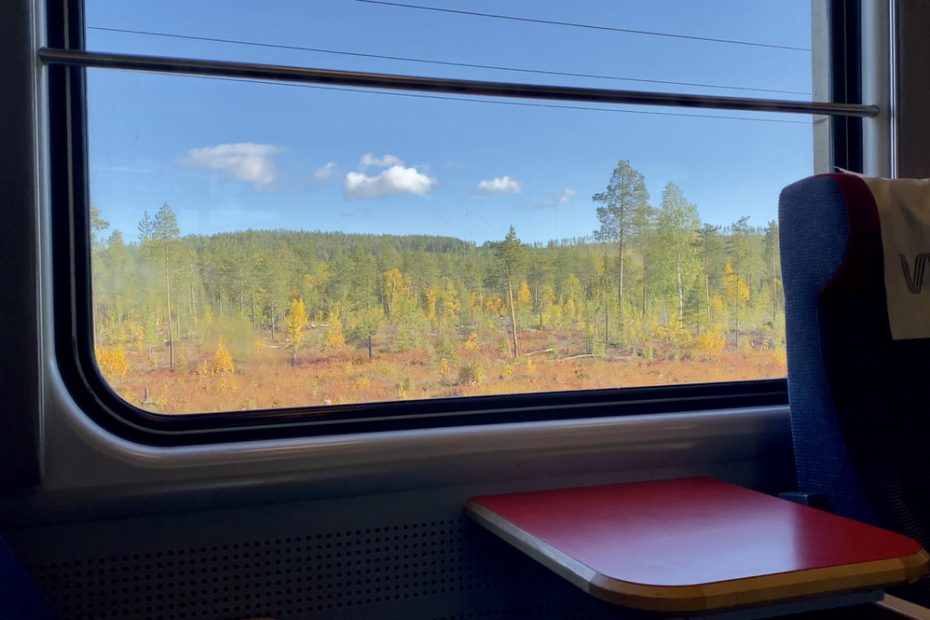
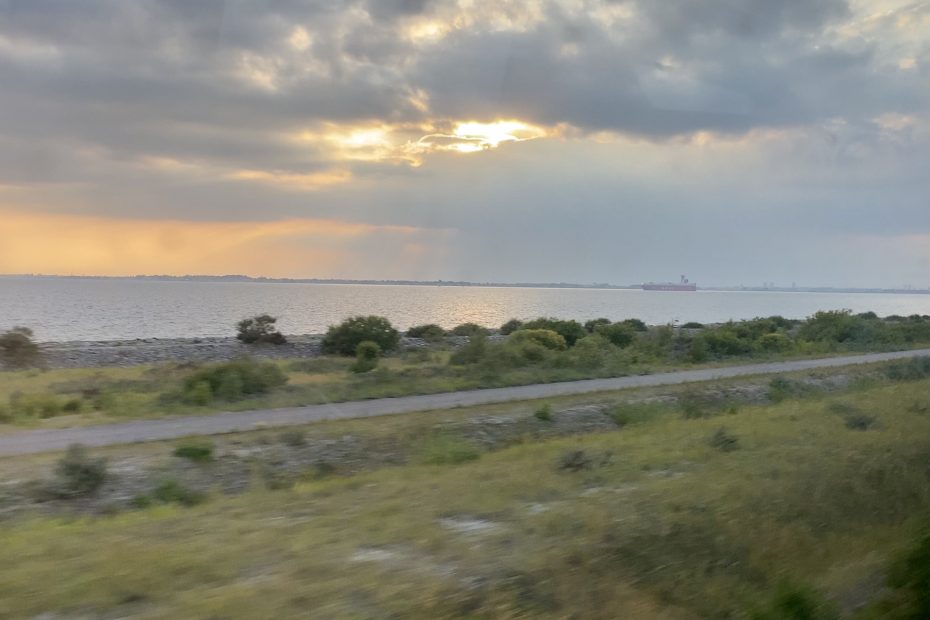
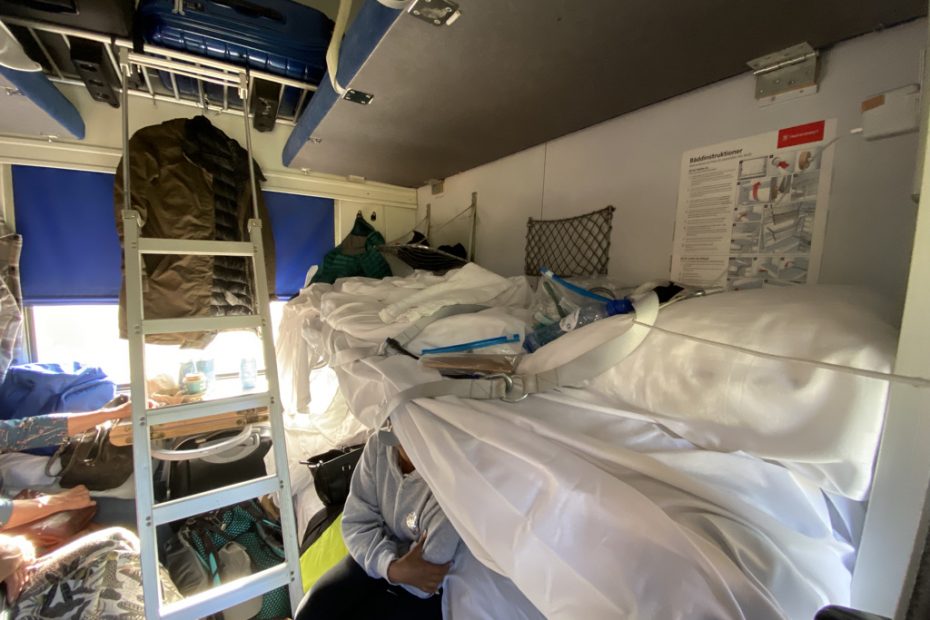
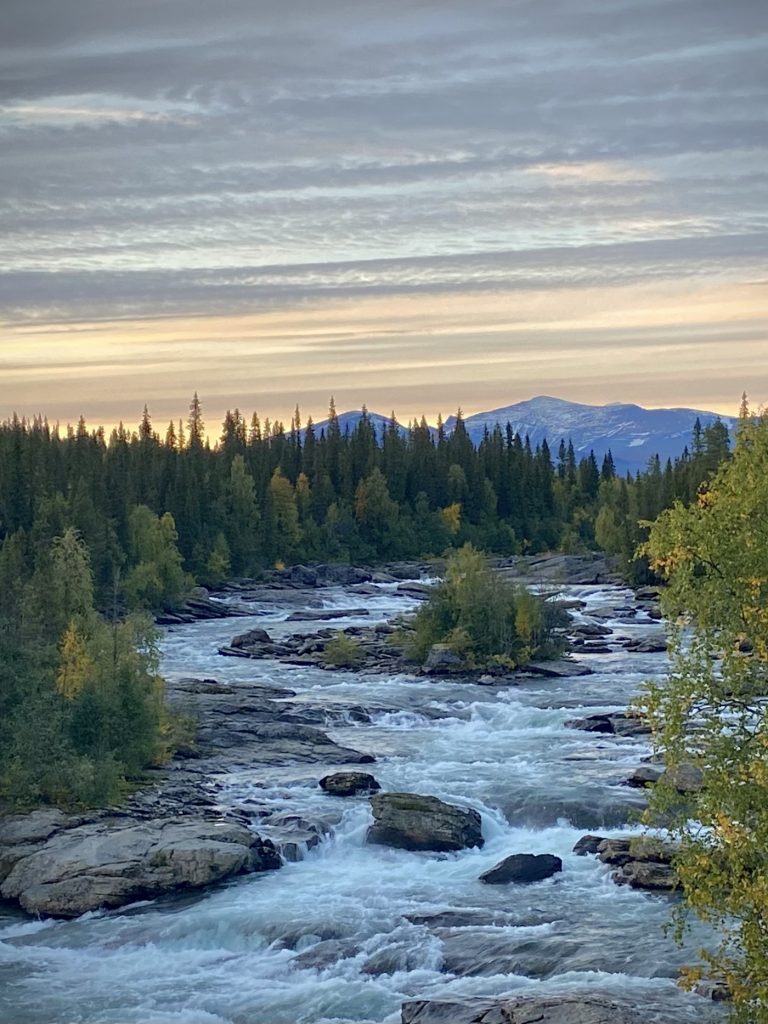

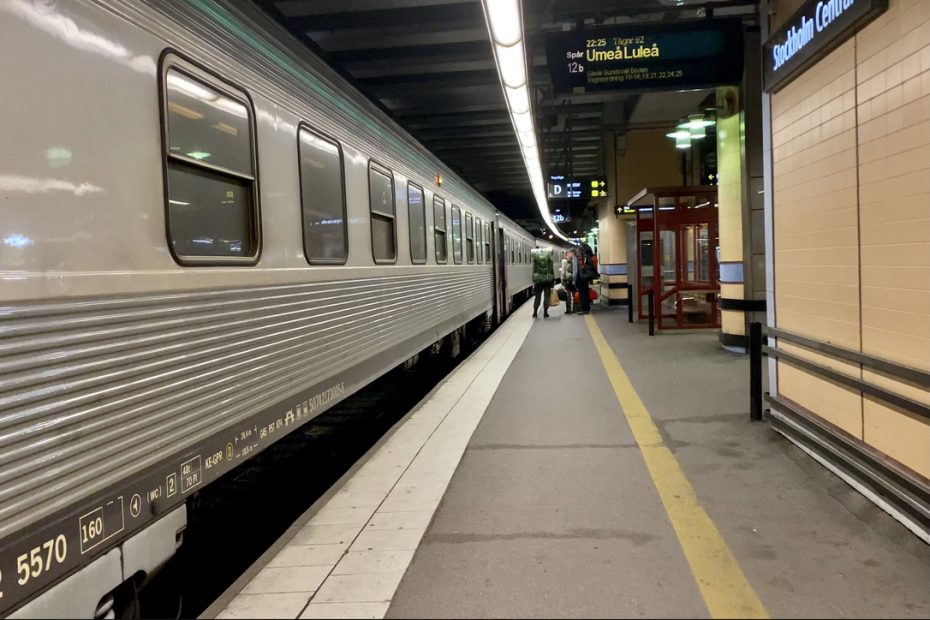
I love your stories, but I’m a bit biassed probably. Keep on the good work, dear Simona.